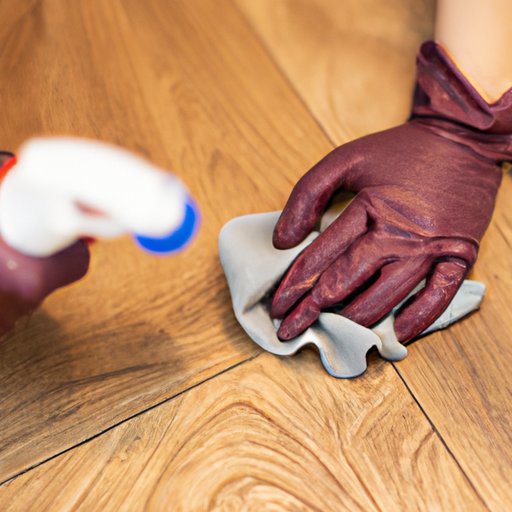
Introduction
Have you ever dealt with a stubborn blood stain before? Whether it’s from a nosebleed, a cut, or a spill, blood stains can be a nightmare to get rid of. Not to mention, if left untreated, they can become even harder to remove. In this article, we’ll explore different techniques and tips for getting out blood stains, so you can save yourself time and stress in the long run.
Understanding Blood Stains
When it comes to stain removal, not all stains are created equal. Blood stains, in particular, can be tricky to remove due to the proteins in blood that bind to fabrics and surfaces. Additionally, the longer blood sits, the more it can set into the material, making it even harder to remove.
It’s also important to note that blood stains differ from other types of stains because they require cold water instead of hot water. Hot water can actually set the stain, making it much harder to remove.
Techniques for Removing Blood Stains
Now that we know about the science behind blood stains, let’s dive into some techniques for removing them. The techniques used will vary based on the surface that the blood stain is on.
Clothes
If you’ve stained your clothes with blood, there are a few different techniques that you can use:
- First, run the clothing item under cold water. This should remove any excess blood from the surface.
- If the stain is fresh, dab the stain with a cloth soaked in cold water. Avoid rubbing the stain as this can make it worse.
- Create a paste using baking soda and cold water. Apply this paste directly to the stain and let it sit for 30 minutes. Then, rinse with cold water.
- If the stain is still present, try using hydrogen peroxide. Apply it directly to the stain and let it sit for 5-10 minutes. Rinse with cold water.
- If all else fails, try laundry detergent and cold water. Soak the clothing item in cold water with a bit of laundry detergent for 30 minutes, then rinse.
Carpets
Removing blood stains from carpets can seem intimidating, but there are a few different techniques you can use:
- First, blot the stain with a cloth. Avoid rubbing the stain as this can make it worse.
- Mix cold water and dish soap together and apply it to the stain. Let it sit for 5-10 minutes, then blot away.
- If the stain is still present, use cold water mixed with ammonia and apply it to the stain. Let it sit for 5-10 minutes, then blot away.
Upholstery
If you’ve got a blood stain on your couch or other upholstery, try these techniques:
- Blot the stain with a cloth to remove excess blood.
- Create a paste using cold water and salt. Apply the paste to the stain and let it sit for 30 minutes, then blot away.
- If the stain persists, apply hydrogen peroxide directly to the stain. Let it sit for 5-10 minutes, then blot away.
Preventing Blood Stains
Of course, the best way to deal with blood stains is to prevent them from happening in the first place. Here are a few tips:
- Wear protective clothing when doing activities that might cause blood stains, such as cooking or exercising
- If you do get a cut or nosebleed, take care of it immediately to prevent blood from staining surfaces.
- Use stain-resistant products, such as mattress protectors or sofa covers, to prevent stains from setting in.
Additionally, quick action can also help prevent stains from setting. If you notice a blood stain, try to treat it as soon as possible to prevent it from becoming more difficult to remove.
When to Call in a Professional
While most blood stains can be removed with the techniques described above, there may be instances where you’re simply not having any luck. For example, if blood has soaked into a mattress or heavily soiled fabric, it may be best to call in a professional cleaner. Additionally, if you’re worried about damaging expensive or delicate items, it’s best to leave the job to someone with experience and expertise.
Conclusion
Dealing with blood stains can be frustrating, but it doesn’t have to be. With the right techniques and quick action, you can remove these stains from clothes, carpets, and upholstery. Remember to use cold water, avoid rubbing, and try different cleaning agents until you find one that works.





